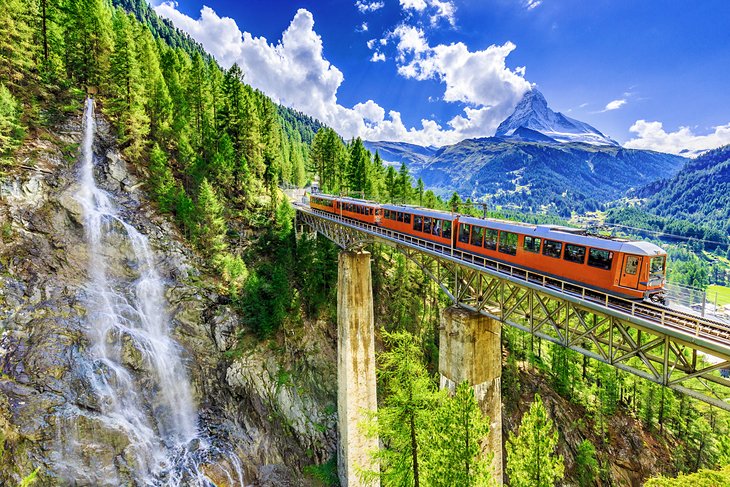
Depending on your travel goals, the ideal time to visit Switzerland may vary. The best time of year to travel if you want to go skiing is without a doubt winter. Since it’s warm even at the mountaintops in the summer and there won’t be much rain to ruin your outdoor activities, summer is the best time to go trekking in the mountains.
If you want to experience a little bit of everything while traveling, the ideal months to visit Switzerland are April through June. There will be some snow if you visit during this time period early, and there will be warm days if you arrive later.
Temperatures will vary from 15 to 22 degrees Celsius and there will be some rain, but there will also be several long days with lots of sunlight that are great for hiking and sightseeing. The most unpredictable weather occurs in May; you can see rain and chilly evenings or sunshine with lows in the 20s.
Because the summer throngs won’t begin to arrive until July and the winter throngs have already left, there will be more peace and quiet and you’ll have the chance to discover cheaper airline and lodging.
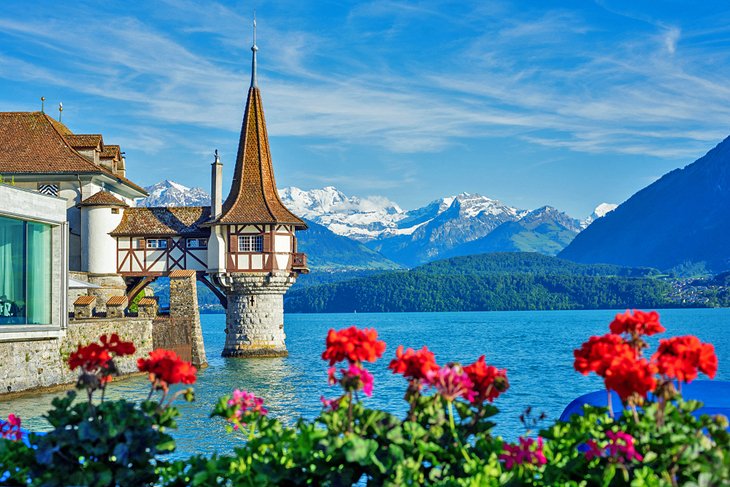
In Switzerland, depending on the month, you’ll experience a range of temperatures and weather patterns from very cold, snowy winters to brilliant, sunny summers.
One of the most stunning sights you may see is a Swiss meadow filled in wildflowers, and spring is the greatest time to see it there. March is the ideal month to visit the slopes in the Alps where there is still plenty of snow at higher elevations, with temperatures reaching up to 11 degrees Celsius and lots of sunshine.
Because it is less busy, prices are starting to drop, and there are more than 11 hours of daylight each day in March, it is the optimum time to enjoy the best of both worlds.
March brings mid-teens temps and a lot of precipitation. Hikers are beginning to overtake skiers on the slopes, but if you intend to trek in the mountains in April, be sure to have lots of layers and waterproof clothing because the weather can swiftly change and get chilly at night. Approximately 17–18 days in May see precipitation, making it a moderately rainy month overall.
Summer: Mountain cable cars open in June to coincide with the start of the hiking season. June is the ideal month to travel if you want to go hiking because most hikers arrive in July and August. As a result, you are free to explore without having to share the paths with a lot of other people.
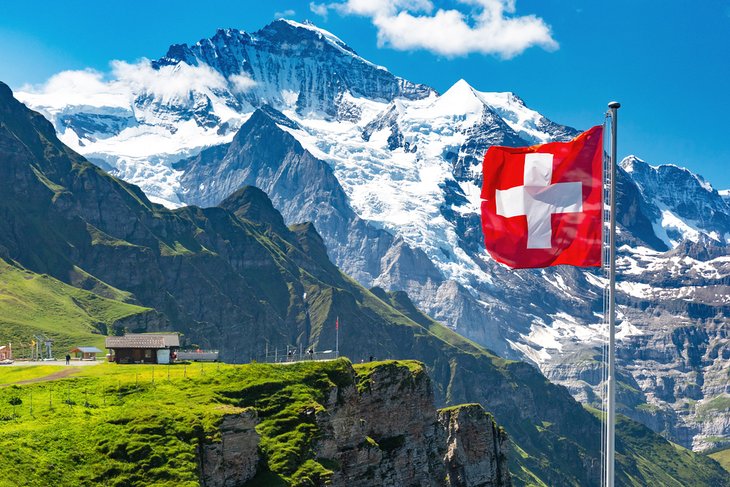
The cost of travel and housing significantly rises during the summer months because of the crowds. August is a great month for high-altitude mountaineering and lake bathing, in addition to open-air events like the Lake Thun Music Fest and the Paleo Rock Festival in Nyon, Switzerland’s largest outdoor concert.
Autumn: September and October are particularly charming months in Switzerland. Mountain hiking is best done now because there hasn’t been much rain, the leaves are changing, and the air is crisp. In addition, fog is beginning to form.
If you’re planning on hiking in the mountains, bear in mind that funiculars stop running before the first frost and that trees at high altitudes start to turn scarlet and yellow in the early fall.
By November, daytime highs are only a few degrees over freezing and nighttime lows are barely above zero. Even though November doesn’t see a lot of rain, you should still pack a thicker jacket in case it starts to snow as well as waterproof footwear.
Winter: People flock to the country in the winter to enjoy the snow. The best and busiest months for snow activities are December through February, even though ski resorts normally open in November and remain open until April.
In most cities, prices increase in December as tourists swarm there to shop at Christmas markets and celebrate the season amidst snow-capped mountains. As a result, expect lodging expenses to spike near the mountains. If you’re not a skier, don’t allow the chilly weather keep you from visiting Switzerland in the winter; it’s fun.
With temperatures hovering slightly above or below zero degrees Celsius in December and January, the winter climate can be unpredictable. Up to 16 days in December are typically covered with precipitation (rain, snow, or sleet), and all of the country will have at least a trace of snow in January.
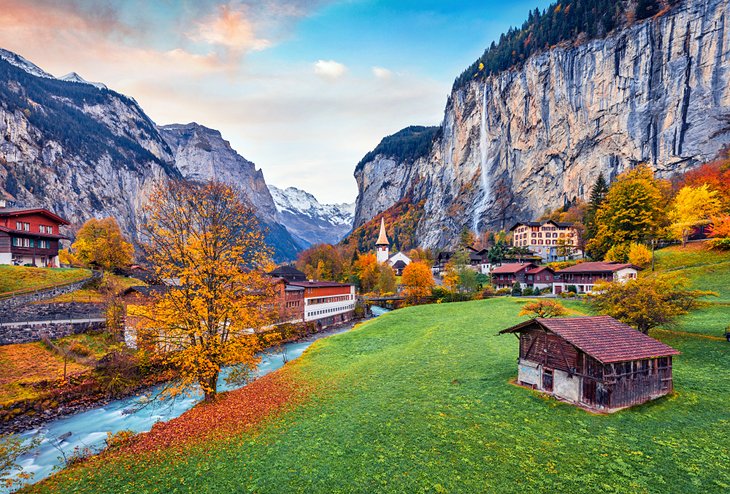
If you’re an experienced skier or snow-sports enthusiast, there’s nothing better than a trip to Switzerland in the winter, particularly during the months of January and February, which are considered winter peak season and perfect for skiing as well as having a good possibility of obtaining soft, fluffy snow in towns and valleys.
The coming of rain and darkness, as well as restricted hours or the closure of many tourist attractions, are further constraints that come with winter. Most hiking trails are also closed.
If you want to enjoy outdoor activities that don’t require snow, September and October are the finest months to travel there. When you have the opportunity, enjoy the valleys and lower-elevation slopes in September and October, however by late October, mountain tracks can already be covered in snow.
In October, nightly lows might drop as low as seven degrees Celsius, with average highs in the low teens (layers are your friend).
While the first part of October is still recognized as shoulder season, the second half is considered low season. If you’re coming this way, right now is the best time to locate cheap travel and housing options, as well as offers on trip packages and tours.
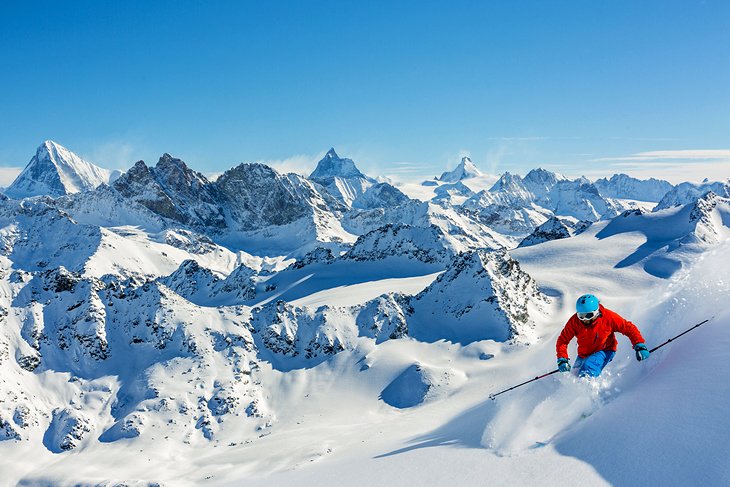
The best months to go skiing in Switzerland are January and February, although the ski season lasts for more than six months and starts in November. Because people go to the slopes as soon as the holidays are over and again in February when European schoolchildren begin their summer vacations, these are also the busiest seasons for skiing. During these two peak seasons, a lot of resorts require a minimum stay of seven days.
These months are characterized by crowds, some of the coldest weather, the most expensive travel, and the most expensive accommodation rates. Even if money is not an issue, reservations must be made months in advance if you want to stay near to the slopes.
Skiing is accessible year-round in Zermatt and on the 12,000-foot slopes of the Theodul glacier if the chaos of winter is too much for you. In the summer, athletes can ride the Klein Matterhorn cable car to access the steep slopes’ high-speed tracks. Beginners can stay below, where there is a ski school.
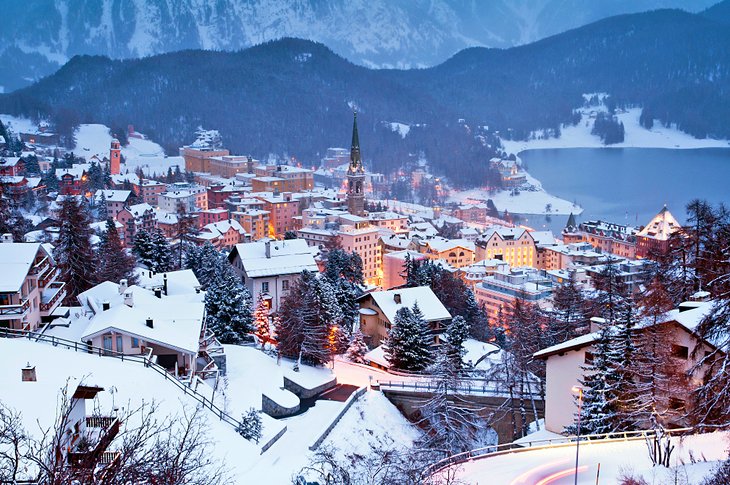
Skier or not, St. Moritz, Switzerland’s premier winter mountain resort, is a sight to behold. Along with world-class skiing, this little ski resort town offers numerous groomed snowshoeing trails and iron-rich mineral hot springs. Ice hockey games, cricket matches, and ice skating all take place on the frozen lake at St. Moritz throughout the winter.
The Bernina Express travels from St. Moritz through Alpine valleys, massive glaciers, and the Brusio Spiral Viaduct, one of Europe’s highest-altitude rail routes. It is recognized as one of the most picturesque train rides in the entire globe.
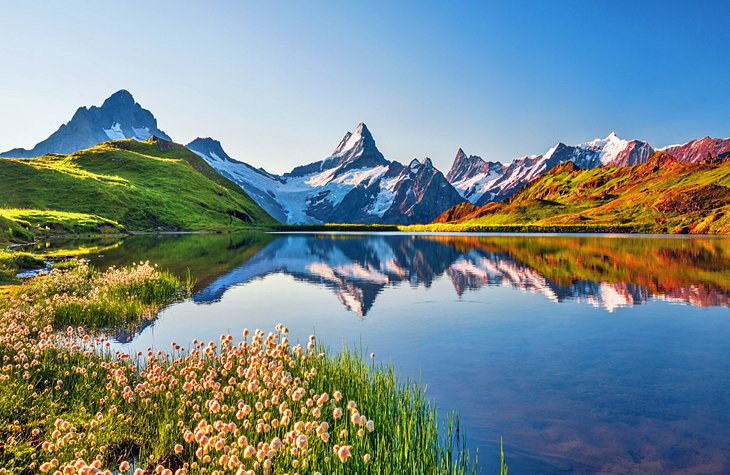
The Swiss Alps are home to the Matterhorn, Switzerland’s most well-known mountain, as well as the Great Aletsch Glacier, authentically Swiss towns like Grindelwald, and an infinite supply of valleys and rolling hills covered in wildflowers.
Even though when you picture the Swiss Alps, you probably picture snow-capped mountains, the best time to visit is actually from June to October, when the weather is comfortable, it doesn’t rain much, and nature is in full flower everywhere you look. This is the finest time to go hiking and mountain biking, with the exception of July and August, when there are more people on the slopes.